Proper nutrition is the most important part of caring for your cat.
As a cat parent, you need to be educated on the latest news in cat nutrition!
Eating well is the most important step in your cat living a long and healthy life.
Want to give your feline friend the best diet?
Keep reading for tips and important information about giving your cat the diet it needs.
What Nutrients Cats Need
Cats are naturally carnivores. This means that they find their nutrients their bodies need specifically in animal products.
In the wild, cats are predators that hunt and consume prey. This prey contains high amounts of protein, fat, and a minimal amount of carbs.
Cats living in the wild normally feed on birds, mice, rabbits, and rats. A cat’s diet still requires these nutrients today.
Cats do NOT need supplements. They typically reap all their nutrients, vitamins, and minerals from their food.
If you’re considering giving your cat a supplement, be sure to consult with your veterinarian first.
**IMPORTANT** Supplements can be harmful to your cat. Never give your cat supplements without your veterinarian’s approval.
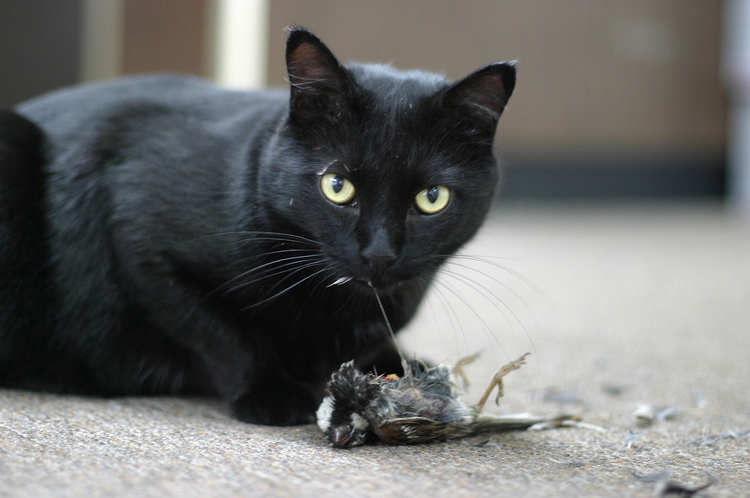
Different Cats Have Different Dietary Needs
The ASPCA, recommends that a grown cat should eat enough high-quality, nutritious food to meet their energy standards in order to maintain and repair their body tissues.
The amount of food you should feed your cat should be based on his/her size, energy level, and age. Activity levels vary for each cat.
Hydration Is Essential
Regardless of your cat’s activity level, always make sure your cat has access to clean drinking water.
According to Noah’s Arc Vet Hospital in Virginia, cats typically drink very little water throughout the day.
Cats rely heavily on their food as their source of water, so it is important to always keep their water bowls throughout your house.
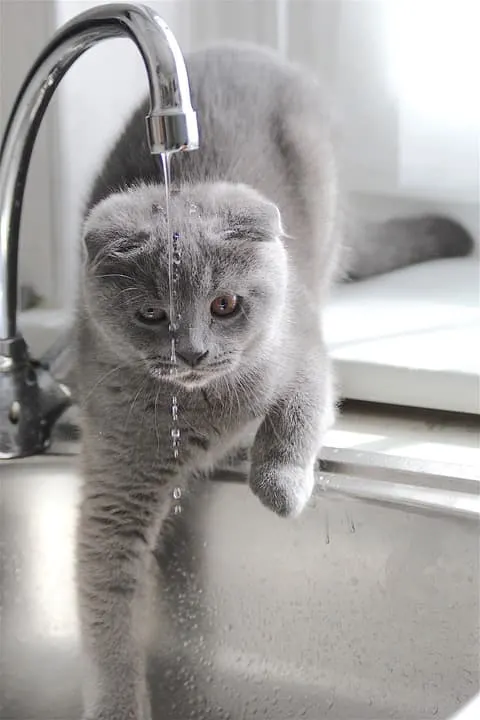
So Many Cat Food Options – How Do You Choose?
It’s easy to get overwhelmed with all the cat food options.
The good news is that almost all major brands of cat food have been approved by a team of veterinary scientists, therefore most cat foods are safe for your kitty to consume.
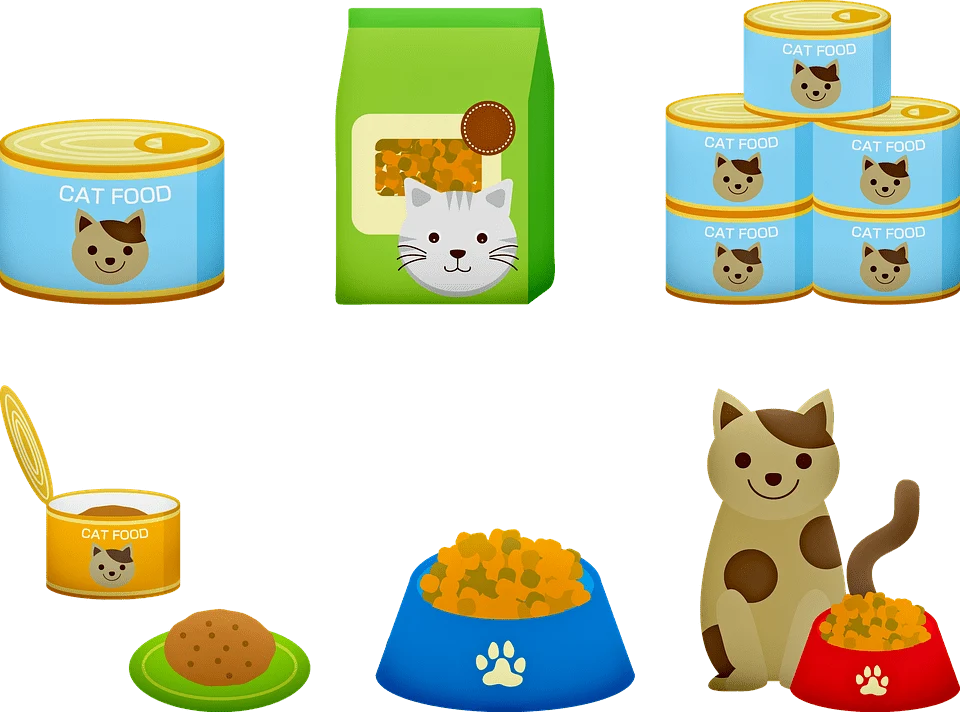
Wet or dry food?
In the wild, cats get most of their water intake from their food. Similarly, eating wet food gives your cat an opportunity to boost their water intake and stay hydrated.
Dry food is great for busy cat parents or cat owners on a budget because it is convenient and cheaper.
However, an all-dry food diet puts your cat at risk of falling short on their water needs.
Overtime, an all dry diet could cause dehydration and lead to kidney diseases and urinary problems.
To prevent this, try balancing your cat’s diet with both wet food and dry food.
Below are the pros and cons of wet and dry food.
Wet Food Pros:
- Contains plenty of water to keep your cat hydrated
- Easier for cats to chew
- Offers more variety in diet
- More similar to what cats would eat in the wild
Wet Food Cons:
- More expensive than dry food
- Will cause bacterial growth if left out too long
- Messy
Dry Food Pros:
- Convenient
- Cheaper
- Longer shelf life
Dry Food Cons:
- Low water content
- All dry diet makes cats more prone to dehydration
- Can lead to to kidney and urinary problems overtime
- Calorie dense – can lead to obesity
**SOLUTION** Purina veterinary nutritionists recommend a balanced diet of both wet and dry food to keep your cat hydrated and add variety to their diet.

Free-Feeding Dangers
It’s easy to see why free-feeding your cats is an attractive option.
Busy cat parents often like to leave a large quantity of dry food out and let their kitties nibble on it throughout the day.
However, free-feeding is not the best option for several reasons listed below:
- In a household with more than one cat, free-feeding makes it impossible to ensure both cats are eating the same amount of food.
- Free-feeding can encourage competitive behavior between cats.
- Free-feeding can lead to obesity from excessive eating.
- Free-fed cats can still gain weight, even with calorie controlled food.
**SOLUTION** If you have one cat, it’s easy. Simply use the cat food label to portion out the right quantity of food.
How to Prevent Food Greed in a Multi-Cat Household
If you have more than one cat, you know it’s not uncommon for one cat to steal food from another cat, meaning one cat is eating more.
The last thing you want is for one cat to become obese while another cat doesn’t get enough food.
Try your best to make sure each cat is eating the right portion. Here’s how to do it.
Put the correct quantity of food for each cat in separate food bowls and place them in different, quiet areas of your house. Guide each cat to their designated food bowl.
This allows each cat to eat out of sight from the other cats and prevent greed and aggression.
If one cat still tries to steal food from another cat in its new separate space, simply pick the cat up and guide him/her back to their own food bowl.
You might even need to place each cat in separate rooms with the doors closed temporarily until they’re done eating.
Like all new changes, it will take time to establish this new feeding habit between your cats. Be patient – it’s well worth your cats’ health!
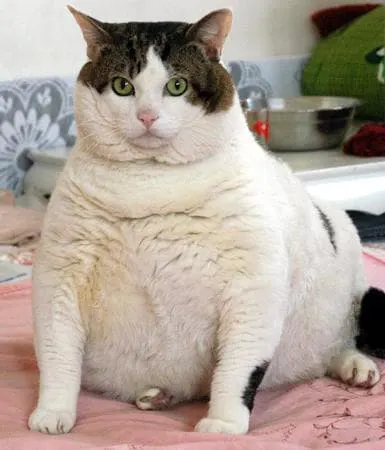
PRO TIP: If you’re still experiencing difficulty getting your cats to stop eating each other’s food, try the SureFlap Microchip Pet Feeder.
This special feeding device is programmed to only give food access to the cat with a specific microchip number or RFID collar tag.
The food bowl only opens when the specific cat walks up and closes immediately after the cat walks away.
The sides are guarded to ensure other pets don’t try to steal food from different angles.
This is also a great option for multi-cat households with a cat on a prescription diet or cat owners with dogs who steal food.
Essential Cat Diet Tips
Below are some fundamental steps to follow before you set a diet for your cat.
Once you have these facts and tips in mind, you’ll be prepared to give your kitty the diet he or she needs to be healthy.
- Know how to read pet food labels: The University of Florida College of Veterinary Medicine states that all pet owners should know how to correctly read and interpret pet food labels. There is a lot of advertising around pet foods, and people tend to look for ingredients rather than identifying the correct nutrients their cat needs in a pet food label.
- Keep your kitty’s needs separate from your own eating habits: You might be a vegan or vegetarian, but always remember that cats are carnivores and need specific nutrients and vitamins that exclusively come from meat. Their needs are different from yours.
- Remember that carbs and kitties don’t mix: Your cat’s body is specifically designed for a low carb diet. The Journal of Animal Science states that cats don’t produce the enzymes needed to digest carbohydrates.
- Don’t give your cats human food: No matter how hard they beg for a bite of your food, you should remember that cats are not equipped to digest human food, seasonings, or spices. Some human foods cause major health complications for cats. Click here for a complete list of human foods that are dangerous to cats.
Don’t Get Overwhelmed by Food Trends
The list of ingredients people claim to be good and bad for cats is getting longer and more overwhelming. These days, it’s hard to tell fact from fiction.
Don’t fall for scams about dietary restrictions for cats without looking at the evidence.
For example, a grain-free and gluten-free diet for cats is very popular right now and pet food companies are jacking up the price of what they claim to be “premium” products.
Most cats don’t require a grain-free diet unless they have a grain allergy. According to a study published in Veterinary Dermatology, grain allergies were very rare.
The same goes for a gluten-free diet. There is no strong scientific evidence that cats require a gluten-free diet.
Consider these things and do your research before over-paying for cat food based on health fads.
SURVEY: Do You Consider Cats Family?
Your opinion matters!
Treat Control
Giving your cat an occasional treat is not harmful, but treats should be given in moderation and be calculated into your cat’s daily calorie requirements.
A good rule of thumb with treats is to make sure the treats do not take up more than 10-15% of your cat’s daily food intake.

LEARN MORE: 8 Human Foods Poisonous to Cats
So what’s the best cat diet?
It all depends on the individual cat. Their age, activity levels, and current health condition are factors that need to be taken into consideration.
As stated above, almost all cat food is regulated and approved by a board of veterinarians, therefore any cat food you encounter at the grocery store is safe and effective at meeting your cat’s nutritional needs.
Just make sure to follow the instructions on the label to ensure your cat is not overfed and at risk of obesity.
Below I’ve listed my top picks for senior cats, kittens, indoor cats, and cats of all stages.
Remember that these are only suggestions and that it is best to consult with a veterinarian before making any permanent decisions.
For Senior Cats
Dry Food Choice: Hill’s Science Diet For Senior Cats 7+, Indoor Formula
Wet Food Choice: Nutro Max Adult Wet Canned Cat Food
For Kittens
Dry Food Choice: Blue Wilderness High Protein Kitten
Wet Food Choice: Royal Canin Nutrition Kitten Food in Sauce
For Indoor Cats
Dry Food Choice: Natural Balance Limited Ingredient Dry Cat Food
Wet Food Choice: Natural CORE Grain-Free Wet Food
For Cats of All Stages
Dry Food Choice: Taste of the Wild Rocky Mountain Grain-Free Dry Food
Wet Food Choice: Fancy Feast Tender Turkey Primavera Shredded Wet Food
#1 Cat Diet Rule: Always leave your cats with plenty of fresh water.
For the best advice, consult with your veterinarian on food suggestions, especially if your cat has a health condition.
Your vet will be familiar with your cat and have the best idea of how to meet their dietary needs.
QUESTION: What do you feed your kitty? Tell us in the comments below!
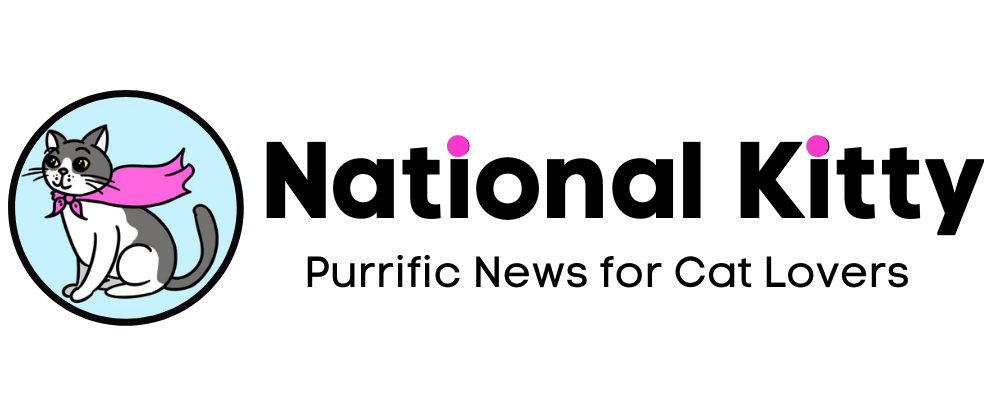
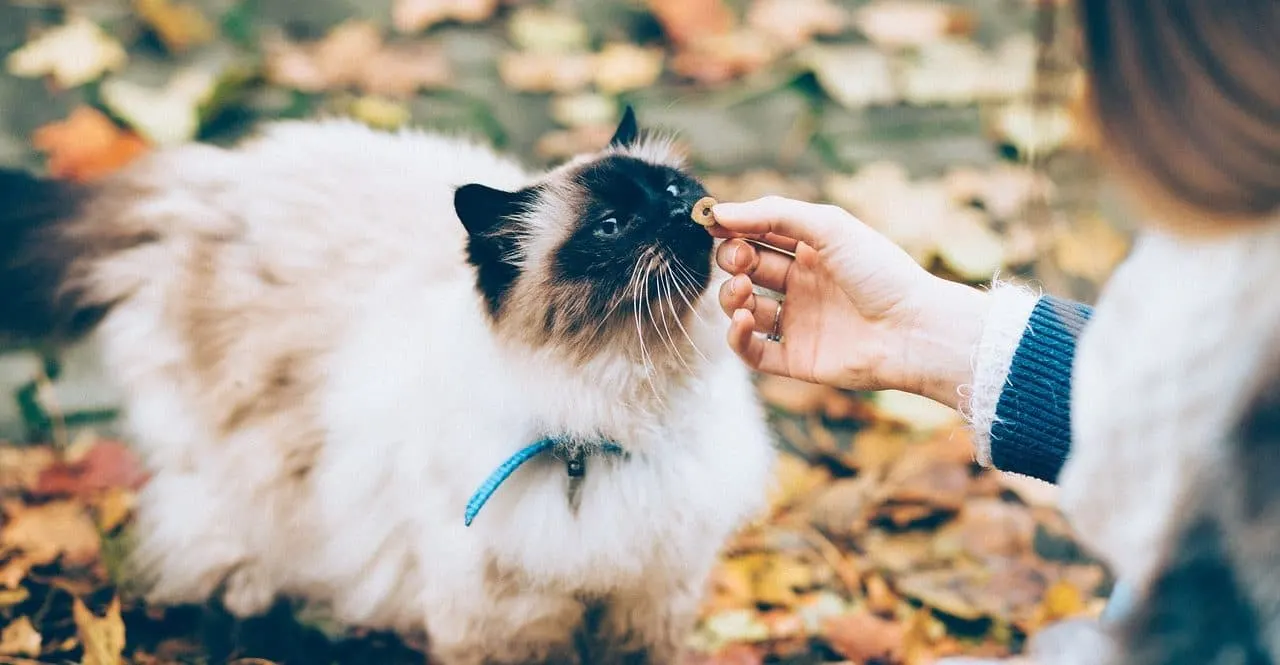
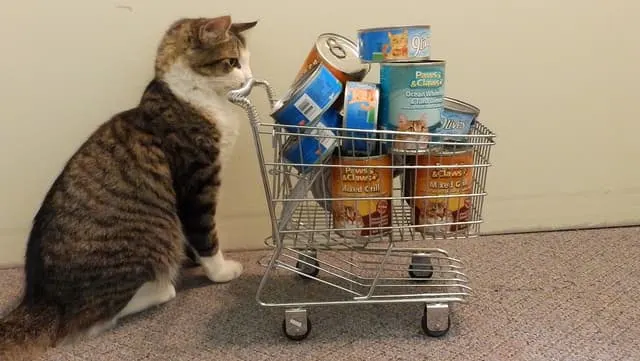









Lisa K
Saturday 13th of March 2021
My cats get purina one dry food mixed with Friskies wet food. They do very well on this diet. I also give plenty of Rachel ray treats, fresh water and home grown cat grass.
Mary
Friday 12th of March 2021
Taste of The Wild is what I feed my Cat.
Linda Fager Gaither
Friday 12th of March 2021
my 4 yr old female Japanese bobtail gets one can Fancy Feast in AM and one in PM...or...1/2 can Friskies Indoor or Farm wet food AM and PM. I add a tablespoon of water each feeding and always have dish of fresh water next to her feeding bowl. At bedtime she gets a "snackie" of a tablespoon of dry Fancy Feast. Have several Treats for her but only give 4 at a time as a reward for various things..example: being a good girl to get "piggy nails" clipped....
Blanche Berger
Tuesday 17th of September 2019
I deed Ian's mixed with Purina dry and Purina friskiest wet food
Laura Wurzel
Wednesday 7th of August 2019
I feed my cat Hills Science Diet Adult 7+ savory turkey entree wet food and Hills science Diet Adult 7+ chicken dry food